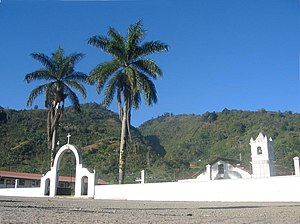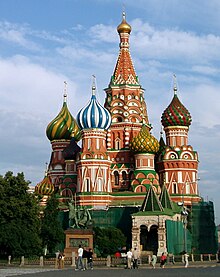This is an old revision of this page, as edited by Guppyfinsoup (talk | contribs) at 23:02, 28 October 2006 (rrv: do not continue this less you violate WP:3RR). The present address (URL) is a permanent link to this revision, which may differ significantly from the current revision.
Revision as of 23:02, 28 October 2006 by Guppyfinsoup (talk | contribs) (rrv: do not continue this less you violate WP:3RR)(diff) ← Previous revision | Latest revision (diff) | Newer revision → (diff)| This article needs additional citations for verification. Please help improve this article by adding citations to reliable sources. Unsourced material may be challenged and removed. Find sources: "Church" building – news · newspapers · books · scholar · JSTOR (Learn how and when to remove this message) |

- This article is about buildings used for religion worship. For other uses of the term, see Church (disambiguation).
A Church is a building used for prayer, worship, or other public religious services, usually referring specifically to those for Christian worship.
Development

The first Christians were, like Jesus, Jews resident in Israel who worshiped on occasion in the Temple in Jerusalem and weekly in local synagogues. Temple worship was a ritual involving sacrifice, occasionally including the sacrifice of animals in atonement for sin, offered to Yahweh until Jesus became the final sacrificial offering on Calvary. The New testament includes many references to Jesus visiting the Temple, the first time as an infant with his parents.
The early history of the synagogue is obscure, but it seems to be an institution developed for public Jewish worship during the Babylonian captivity when the Jews did not have access to the Jerusalem Temple for ritual sacrifice. Instead, they developed a daily and weekly service of readings from the Torah or the prophets followed by commentary. This could be carried out in a house if the attendance was small enough, and in many towns of the Diaspora that was the case. In others more elaborate architectural settings developed, sometimes by converting a house and sometimes by converting a previously public building. The minimum requirements seem to have been a meeting room with adequate seating, a case for the Torah scrolls, and a raised platform for the reader and preacher.
Jesus himself participated in this sort of service as a reader and commentator (see Gospel of Luke 4: 16-24) and his followers probably remained worshippers in synagogues in some cities. However, following the destruction of the Temple in Jerusalem in 70, the new Christian movement and Judaism increasingly parted ways. The Church became overwhelmingly Gentile sometime in the second century.
Church architecture

- Main article: Church architecture
A common architecture for churches is the shape of a cross (a long central rectangle, with side rectangles, and a rectangle in front for the altar space or sanctuary). These churches also often have a dome or other large vaulted space in the interior to represent or draw attention to the heavens. Other common shapes for churches include a circle, to represent eternity, or an octagon or similar star shape, to represent the church's bringing light to the world. Another common feature is the spire, a tall tower on the "west" end of the church or over the crossing.
The Syrian city of Dura-Europos on the West bank of the Euphrates was an outpost town between the Roman and Parthian empires. During a siege by Parthian troops in A.D. 257 the buildings in the outermost blocks of the city grid were partially destroyed and filled with rubble to reinforce the city wall. Thus were preserved and securely dated the earliest decorated church and a synagogue decorated with extensive wall paintings. Both had been converted from earlier private buildings.
The church at Dura Europos has a special room dedicated for baptisms with a large baptismal font.
See also altar, altar rails, apse, confessional, chapel, dome, lych gate, nave, narthex, pew, pulpit, sanctuary, steeple.
Ecological churches
As there is a trend toward renewable, durable energy, churches running on solar energy are being set up. The first church running on solar energy is St Oliver Plunkett's Church in West Belfast.
See also
External links
- Church from the Catholic Encyclopedia
- A Church Near You (UK)
- USA Churches - Christian Church Directory